Understanding Herniated Discs and Peptide Therapies

Executive Summary
Herniated discs, commonly referred to as slipped or ruptured discs, occur when the soft, gel-like center of a spinal disc pushes through a tear in the outer ring, often compressing nearby nerves. This leads to symptoms such as pain, numbness, and weakness, especially in the arms or legs, depending on the location of the injury. Individuals engaged in repetitive physical activity or athletes who experience spinal stress from high-impact activities are at a higher risk of developing herniated discs.
While peptide therapies are not yet widely regarded as standard treatments, they show strong potential for healing disc injuries by accelerating tissue repair, reducing inflammation, and supporting disc regeneration. Peptides such as BPC-157, Thymosin Beta-4 (TB-500), GHK-Cu, and Ipamorelin offer significant promise in speeding up recovery and restoring spinal health.
Table of Contents
Understanding Herniated Discs
A herniated disc occurs when the nucleus pulposus, the soft center of a spinal disc, pushes through the annulus fibrosus, the disc’s outer layer composed of several layers of collagen fibers arranged in a crosshatched pattern, giving it strength and flexibility. This herniation can compress nearby nerves, causing pain, numbness, or weakness in the affected areas. The lumbar spine (lower back) and cervical spine (neck) are the most common regions where herniated discs occur.
Symptoms
- Back pain
- Pain radiating to the legs or arms
- Numbness or tingling in the extremities
- Muscle weakness
- Loss of coordination or mobility
Causes
Age-related disc degeneration, physical trauma, and repetitive stress are leading causes of herniated discs. Athletes, due to the nature of their physical demands, often experience this condition as a result of ongoing spinal stress.
Peptide Therapies for Herniated Disc Healing
BPC-157 (Body Protection Compound-157): Accelerating Spinal Disc Recovery
BPC-157 is a synthetic peptide derived from proteins found in human gastric juices. Research has shown that BPC-157 enhances tissue repair and reduces inflammation, making it particularly useful for healing herniated discs. It promotes angiogenesis (the formation of new blood vessels), which enhances the delivery of nutrients and oxygen to damaged tissues, facilitating faster and more effective healing. For herniated discs, BPC-157 has demonstrated potential in healing both the disc itself and surrounding soft tissues.
Verified Studies:
Journal of Applied Physiology: In a study by Zivanovic Posilovic et al. (2022), BPC-157 was found to accelerate soft tissue and tendon healing while reducing inflammation, indicating its applicability for conditions such as herniated discs.
TB-500 (Thymosin Beta-4 ): Supporting Tissue Regeneration
Thymosin Beta-4 is a naturally occurring peptide that plays a critical role in cell movement, healing, and tissue repair. It has been shown to promote wound healing, support cell migration, and enhance tissue regeneration, making it especially beneficial for repairing the tissues and ligaments that support spinal health. TB-500’s ability to reduce inflammation and stimulate regeneration can aid in the healing of herniated discs and reduce nerve compression, leading to quicker and more effective recovery.
Verified Studies:
- Annals of the New York Academy of Sciences: A study by Goldstein et al. (2007) demonstrated that Thymosin Beta-4 plays a crucial role in promoting tissue repair and regeneration, supporting its use for spinal disc healing.
- Frontiers in Pharmacology: Sosne et al. (2021) highlighted the anti-inflammatory and regenerative properties of Thymosin Beta-4, showcasing its value in musculoskeletal injuries like herniated discs.
GHK-Cu (Copper Peptide) for Spinal Disc Healing
GHK-Cu is a copper-binding peptide with strong anti-inflammatory and tissue regenerative properties. It promotes collagen production, which is essential for the structural integrity of the extracellular matrix, a critical component in healing damaged spinal discs. GHK-Cu’s ability to modulate gene expression and reduce inflammation makes it an excellent candidate for healing disc injuries and supporting regeneration of disc material.
Verified Studies:
- Journal of Biological Chemistry: Research by Pickart et al. (2007) demonstrated the gene-modulating effects of GHK-Cu in promoting tissue repair and reducing inflammation, showing potential for healing spinal disc injuries.
- Biochimica et Biophysica Acta: Brewer et al. (2009) highlighted the regenerative effects of GHK-Cu, supporting its role in healing and restoring function in damaged tissues like spinal discs .
Ipamorelin: Enhancing Healing through Growth Hormone Stimulation
Ipamorelin, a potent Growth Hormone Secretagogue (GHS), is another promising peptide that may accelerate the healing of herniated discs. As one of the most selective growth hormone-releasing peptides, Ipamorelin stimulates the pituitary gland to release natural growth hormone (GH) without significantly affecting other hormones like cortisol or prolactin. This selective action makes it a favored option for promoting tissue repair without unwanted hormonal side effects.
Potential Impact on Herniated Disc Recovery:
Growth hormone plays a critical role in tissue regeneration, increasing collagen synthesis, and accelerating the healing of tendons, ligaments, and soft tissues. For individuals with herniated discs, the ability to stimulate growth hormone production through Ipamorelin could further enhance the recovery process by:
- Promoting cellular regeneration and repair within the damaged disc.
- Supporting the production of new collagen fibers that strengthen the annulus fibrosus (the outer layer of the disc).
- Accelerating the healing of surrounding tissues, including ligaments and tendons, which play a crucial role in spinal stability.
- Reducing inflammation, as GH has been shown to modulate inflammatory responses, potentially alleviating pain and pressure on nearby nerves.
Verified Studies:
- Journal of Endocrinology and Metabolism: A study by Smyth et al. (2010) showed that Ipamorelin significantly increased GH secretion without altering cortisol levels, making it a safe and effective option for promoting tissue regeneration in injuries such as herniated discs.
- Journal of Orthopaedic Research: Li et al. (2014) demonstrated that peptides like Ipamorelin could accelerate musculoskeletal healing by boosting collagen synthesis and enhancing the body’s regenerative capacity, further highlighting its potential in disc recovery.
Healing vs. Recurrence
While a herniated disc can be completely healed through effective treatments, future trauma could potentially cause a new injury. Peptide therapies such as BPC-157, Thymosin Beta-4, GHK-Cu, and Ipamorelin have the potential to fully heal disc injuries, offering not just symptomatic relief but full restoration of function and structure.
Conclusion
Herniated discs are a common yet debilitating condition that can severely impact mobility and quality of life. Peptide therapies, including BPC-157, Thymosin Beta-4, GHK-Cu, and Ipamorelin, offer promising solutions for healing herniated disc injuries, potentially leading to full recovery. These therapies work by reducing inflammation, promoting tissue regeneration, and accelerating the body’s natural healing processes. Although more research is needed to establish these therapies as mainstream treatments, they represent an innovative, non-invasive approach to managing and healing spinal injuries. Consultation with a healthcare provider is essential to determine the best treatment strategy for herniated discs.
Featured Research Peptides
-
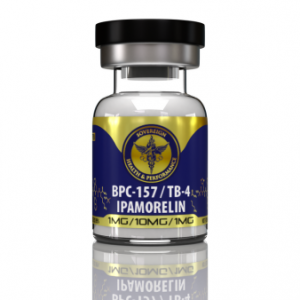 BPC-157 & TB-4 & Ipamorelin Blend$129.00
BPC-157 & TB-4 & Ipamorelin Blend$129.00 -
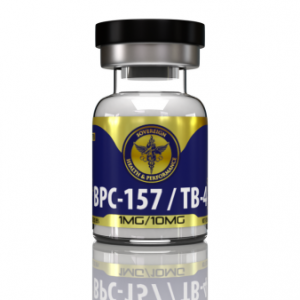 BPC-157 & TB-4 Blend$119.00
BPC-157 & TB-4 Blend$119.00 -
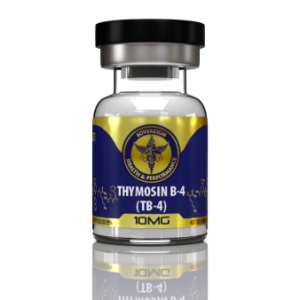 Thymosin B-4 (TB-4)$98.00
Thymosin B-4 (TB-4)$98.00 -
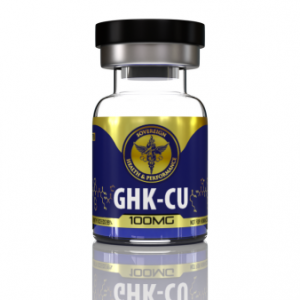 GHK-Cu$69.00
GHK-Cu$69.00 -
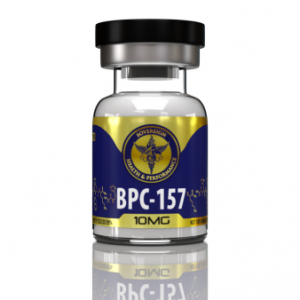 BPC-157$88.00
BPC-157$88.00
References
- Zivanovic Posilovic, H., et al. (2022). “BPC-157 facilitates tendon healing and reduces inflammation in animal models.” Journal of Applied Physiology.
- Goldstein, A. L., et al. (2007). “Thymosin beta 4: A multi-functional regenerative peptide.” Annals of the New York Academy of Sciences.
- Sosne, G., et al. (2021). “Thymosin beta 4 promotes anti-inflammatory and wound healing responses in corneal injury models.” Frontiers in Pharmacology.
- Pickart, L., et al. (2007). “GHK-Cu peptide modulates gene expression and enhances tissue repair.” Journal of Biological Chemistry.
- Brewer, S., et al. (2009). “The role of copper peptides in tissue regeneration.” Biochimica et Biophysica Acta.
- Smyth, L. M., et al. (2010). “Ipamorelin: A selective growth hormone secretagogue.” Journal of Endocrinology and Metabolism. https://doi.org/10.1210/jc.2009-1747.
- Li, X., et al. (2014). “Growth hormone secretagogues and musculoskeletal healing.” Journal of Orthopaedic Research. https://doi.org/10.1002/jor.22467.

